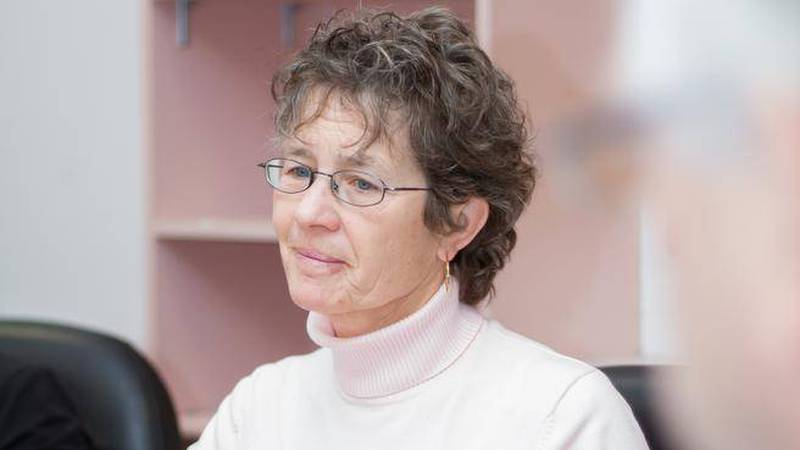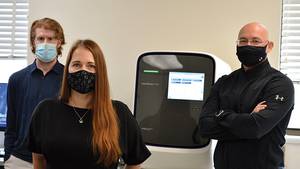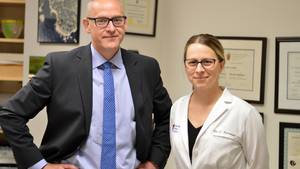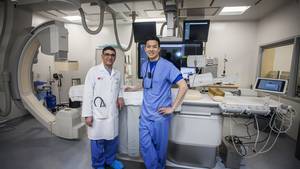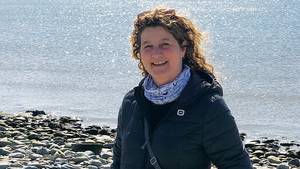When it comes to pain management, Dr. Mary Lynch ranks among North America’s leading experts. She is a researcher, psychiatrist and physician at the QEII Health Sciences Centre’s Pain Management Unit. As a result of her work, Dr. Lynch spends much of her time studying the ways that the human body deals with chronic pain.
In fact, Dr. Lynch is a pioneer in the field, developing a number of treatments that are now coming into widespread use across Canada and beyond.
Her interest in pain management began when she was attending Dalhousie Medical School in the early 1980s. She started studying the emerging field of acupuncture as an elective, and her determination to be as thorough as possible, brought her to Sri Lanka during her medical training to study acupuncture techniques with a master of the art.
“That was my first exposure to the world of pain management, and the beginning of my interest in the field. Gradually, it became my major focus and my passion.”
Today, Dr. Lynch is researching alternative pain therapies — everything from art therapy to cannabinoids — often taking her cues from patients who have found their own treatment regimes. Somewhat of a medical rebel, she admits she’s not afraid to try things that the medical establishments tend to ignore.
“I’ve always been interested in looking at complementary and alternative medicines in a more detailed manner,” says Dr. Lynch. “As physicians we work with evidence-based medicine. We want to see the evidence before we start treating people, but it takes time and a lot of money to build that evidence.
“We have a lot of patients coming in and telling us what they’re doing to help their pain, and a lot of what they’re doing is complementary and alternative medicines. It makes sense to take those things seriously.”
Dr. Lynch has a keen interest in clinical research, and often puts her patients’ own pain remedies through rigorous clinical tests. Recently she and her colleagues completed a pilot trial with 23 patients, followed by a randomized controlled trial involving 100 participants studying the effectiveness of the Chinese practice of Qi Gong on patients suffering from fibromyalgia.
“We found it was very effective,” explained Dr. Lynch. “People who committed to practicing Qi Gong for 45 minutes a day saw significant benefits with the pain and impact of fibromyalgia.”
She is now planning a similar trial with osteoarthritis patients.
Dr. Lynch is also a veteran in the study of cannabinoids and their effect on human suffering, and is the founding director of the Canadian Consortium for the Investigation of Cannabinoids.
“My colleagues and I did a study and found that 14 per cent of patients presenting to a pain unit were using cannabis to control their pain. They were telling us it was helping with their symptoms and they weren’t experiencing adverse effects,” says Dr. Lynch. “I also had a few patients with very serious pain who said that cannabis was the only thing that worked. We thought we had better start looking at this.”
Always up for researching new pain regimes, art therapy as a method of pain relief, is one of Dr. Lynch’s latest studies.
“We’ve worked with artists stricken with intense chronic pain and we’ve found there’s a real psychological and spiritual transformation taking place,” says Dr. Lynch. “Through art they are turning something awful into something beautiful.”
Dr. Lynch served as president of the Canadian Pain Society from 2009 to 2011. She was a keynote speaker at the International Pain Summit in Montreal (International Association for the Study of Pain), and she was involved in the establishment of the “Declaration of Montreal,” a document identifying appropriate pain management as a fundamental human right. Dr. Lynch, along with Dr. John Clark, co-chaired the Canadian Pain Summit in Ottawa in 2012 and continues to advocate for a national pain strategy, but it is in working closely with her patients on the QEII’s Pain Management Unit where she derives some of her greatest satisfaction.
“There have been tremendous advances in pain science over the last few years. We have the tools to make a difference in people’s lives. This is rewarding and exciting, but there is much more work to be done, and I am delighted to say that the team of scientists and clinicians working in pain management, here at the QEII and with our colleagues at the IWK, are helping to get this done.”

